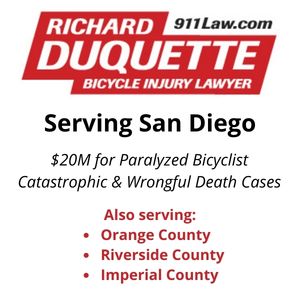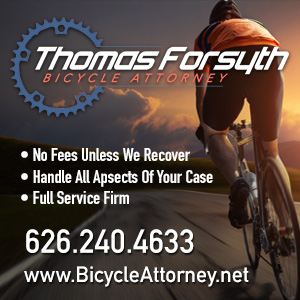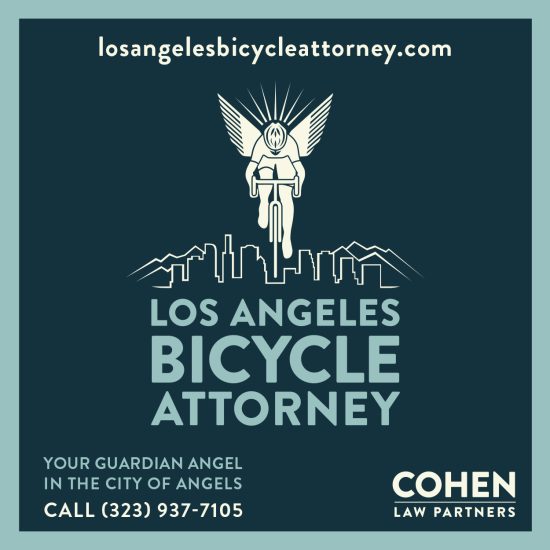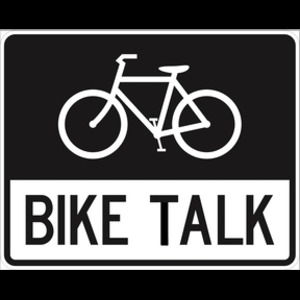If you’ve ever tried to ride the beachfront bike path through Santa Monica and Venice, chances are, you know what the problem is.
Despite countless bike-only signs along most of its length, the path is plagued by the seemingly inevitable conflicts between cyclists, skaters, joggers and pedestrians, as we all fight for a few feet of space on what should be the crown jewel of SoCal cycling.
The problem stems from a traditional lack of enforcement, which has caused countless residents and tourists to believe the path is open to everyone. Not mention location, since the bike path is situated directly on the sand, while pedestrian walkways, where they exist, are often well away from where most people want walk.
Now the County Department of Public Works is preparing a proposal that might solve that problem for a relatively lengthy section of the bikeway.
The County is submitting an application in Metro’s Call for Projects for a pedestrian walkway that would parallel the bike path from Ocean Front Walk north to Will Rogers State Beach. Something that would provide other users a space of their own directly on the sand, while freeing room for bikes on a path that was built for our use — but which many riders avoid because it’s often too crowded to ride.
Problem is, they’ve made a similar request before. And were turned down because the project was seen as benefitting recreational riders, rather than commuters.
This, despite the fact that simple observation indicates that at least some commuter cyclists already use the bike path as an alternative to PCH and crowded Santa Monica streets. And more commuters would use it if there weren’t so many non-cyclists clogging their way.
As a result, I’ve written the following letter in support of the project.
I urge you to write a letter of your own asking Metro to fund the pedestrian walkway, and send it to L.A. County Bikeway Coordinator Abu Yusuf, who has agreed to forward our letters to the right people and include them in the application.
Since Metro’s focus is on transportation, rather than recreation, your letter should stress how a pedestrian walkway would make it easier for you to commute to work, class or other situations, and make you more likely to use your own bike as opposed to other methods of transportation; feel free to use my letter as a guide.
.………
January 11, 2011
Gail Farber County of Los Angeles Department of Public Works 900 South Fremont Ave Alhambra, CA 91803-1331Dear Ms. Farber,
It has come to my attention that the Department of Public Works for the County of Los Angeles will be submitting an application for funding for the Marvin Braude Pedestrian Walkway Gap Closure Project in the Metropolitan Transportation Authority’s 2011 Call for Projects.
As you are undoubtedly aware, the Marvin Braude Bike Trail is one of Southern California’s most popular bikeways, drawing a very high volume of bicyclists, pedestrians, skaters and other users. While there are nearby walkways along other sections of the bike path, there is no pedestrian walkway along the section between Ocean Front Walk in Santa Monica and Will Rogers State Beach in Pacific Palisades.
As a result, bike riders and pedestrians are forced to compete for a limited amount of space, creating inevitable conflicts between various users, as well as congestion that greatly reduces the path’s utility for transportation riders and dramatically increases the risk of serious injuries.
Closing the proposed gap closure between the existing walkways would allow both bicyclists and pedestrians to travel this section of the Marvin Braude bikeway with greater safety. It would also provide access to local transit hubs, as well as the Exposition Light Rail Transit line that is currently in the beginning stages of being extended to Santa Monica.
In addition, moving pedestrians onto a separate pathway would increase the viability of the bikeway as a transportation corridor for bicyclists by providing safer access for riders commuting to the many activity, shopping and employment centers in the Santa Monica, Venice and Malibu areas. It would also encourage people who do not currently use their bikes for transportation to consider it as an alternative to driving or other methods of transit.
I myself have often considered using my bike for transportation to work or meetings in the area, but have usually rejected it at least in part due to the congestion and safety hazards caused by pedestrians and other non-bike users on the bike path.
I strongly urge the Los Angeles County Metropolitan Transportation Authority to move this vital project forward by approving funding for the Marvin Braude Pedestrian Walkway Gap Closure Project in the 2011 Call for Projects.
Sincerely,
Ted A. Rogers BikingInLA.com.………
UCLA will host a day-long Complete Streets workshop Downtown on Friday, February 25th; participation is open to registered attendees; thanks to @Maddz4planning and @kneel28 for the heads-up. Bikerowave is offering a free bike-fitting workshop at 6 pm Saturday, January 15th; few things will improve your performance and enjoyment more than a bike that fits right. CicLAvia ventures into L.A. cycling’s undiscovered country, scouting streets for a possible South L.A. route. Bikeside encourages cyclists to walk precincts for the newly beardless Stephen Box. LADOT Bike Blog introduces LADOT’s Assistant Coordinators. Flying Pigeon looks at the January Spoke(n) Art Ride; the next one takes place on Feb. 12. Gary writes about the lessons learned from Long Beach’s bike planning. One of L.A.’s best wrenches, who I never seem to get over to see even though he works just down the road, offers some breathtaking views of the city from a recent off-road ride.
A Huntington Beach cyclist sues the city after falling while crossing railroad tracks. San Clemente requests funding for a possible bicycle freeway. Would new bike racks encourage more San Diego cycling? Santa Cruz officials consider moving the 1800-mile Pacific Coast Bike Route off a busy main road and onto a quieter, more picturesque street. Even famed bike builder Gary Fisher is a victim of bike theft.
Streetsblog says we’re all pulling for AZ Congresswoman Gabrielle Giffords; a vigil will be held for her and the other shooting victims on Tuesday evening. Commuting to work could save your life. Bike Portland’s Jonathon Maus says it’s time to tone down the rhetoric on our streets, as well as our political discourse; I couldn’t agree more. People riding bikes aren’t jerks, they’re just like you. Does the Mary Poppins effect keep cyclists in regular clothing safer? New Belgium’s Tour de Fat raises over $300,000 for bike non-profits, including C.I.C.L.E. and LACBC. Ohio bike lawyer Steve Magas — one of the out-of-area lawyers you’ll find over there on the right — looks at the official stats for cyclists killed in that state in 2010, and lowers the count by two. Make phone calls directly from your bike with this awkward, butt-ugly innovative helmet with built-in phone; thanks to Just Another Cyclist for the link. Tips to quiet your ride. Fears of unbridled gentrification rise as streetcars return to Lego City; yes, it’s written with tongue planted firmly in cheek.
I confess, there were times I felt like a cowboy riding around the Mountain West, but turn my bike into a horsie? No. Just no. A top British barrister says the courts have to do more to protect cyclists. A Spanish mountain biker charged with doping offenses has committed suicide. The London Olympic Velodrome could be the world’s fastest track. British Olympian James Cracknell says he’s lucky to be alive after getting hit by a gas tanker near Winslow AZ last July; I think everyone who’s followed the story would agree. A Surrey cyclist raises over £90,000 for charity by riding 100,000 miles. Spanish cyclist Alejandro Valverde remains banned. A German biker didn’t think cycling through Siberia would be so darn cold.
Finally, the solution to dooring could be as simple as stop riding your damn bike on the street, according to antidooring.org, which also notes that every car on the road can replace up to six bicycles; I sincerely hope this is tongue-in-cheek. An Ohio used car dealer is willing to give joggers and cyclists a 15% discount if you just promise to stay the hell out of his way. Maybe it would help if we all took this pledge.
And RIP to Peter Yates, director of Breaking Away, the movie that got me on a bike three decade ago. Arrivederci, papa.

























